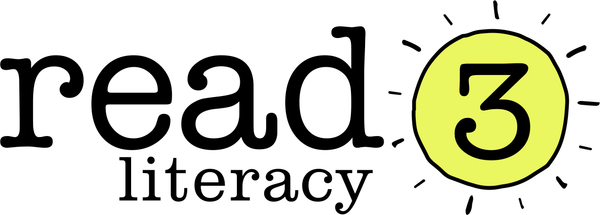Read3 Scope and Sequence
Read3 is an intensive, systematic literacy intervention program.
Read3 is divided into three distinct modules, each targeting a different stage in the learn-to-read process. Lessons build on each other and mastery is required at every step.
Every phonics-based program introduces letters and their sounds in a different order. Our order has been set to accommodate children who are easily overwhelmed by too many complex vowel rules. It is based on clinical outcomes achieved when working with children with literacy difficulties, including dyslexia.

| DOWNLOAD SCOPE & SEQUENCE |
During Module 1, your child will will learn our unique system for decoding words to allow them to start reading simple readers. The module focuses on mastering single sounds and letters, and building understanding of our learning system. You’ll notice we have split Module 1 into five steps. It’s human nature to want to race ahead, but it is imperative that you give your child time to master a limited number of letters before introducing more.
Module 2 departs from many phonics programs by introducing the concept of long vowel sounds early. We do this to help build flexible processing of vowel sounds as this can be very tricky for a child with poor working memory or weak rapid automatic naming skills. We first introduce one simple long vowel rule ("silent e" rule). This rule can be applied to short CVC words, reducing the 'overload' children with dyslexia experience when multiple alternate spellings for long vowels are introduced. In Step 2 short words ending in a vowel (e.g. me, be, hi) are introduced, as well as 2-syllable words containing both short and long vowel sounds (e.g. bacon, wombat, hero, donate). In Step 3 we introduce morphology (word endings), and start to build awareness of spelling patterns that arise as we alter words (e.g. bike, biker, biking).
Module 3 focuses on building word length in words with both short and long vowels. In Step 1 extra consonants (2-consonant blends) are added to words containing short vowels and the spelling pattern 'tch' is explored. In Step 2 extra consonants (2-consonant and 3-consonant blends are added to long vowels and extension activities explore spelling patterns dge, nge and nce. At the completion of Module 3, your child will have established a system for decoding. Their reading system is now firmly established which can be applied to a traditional phonics program to learn more of the extended code.
Throughout the program we build mastery of a range of high-frequency words, many of which are decodable using the system learned in the Read3 program. The number of true 'sight words' that need to be memorised is significantly reduced with this approach.
